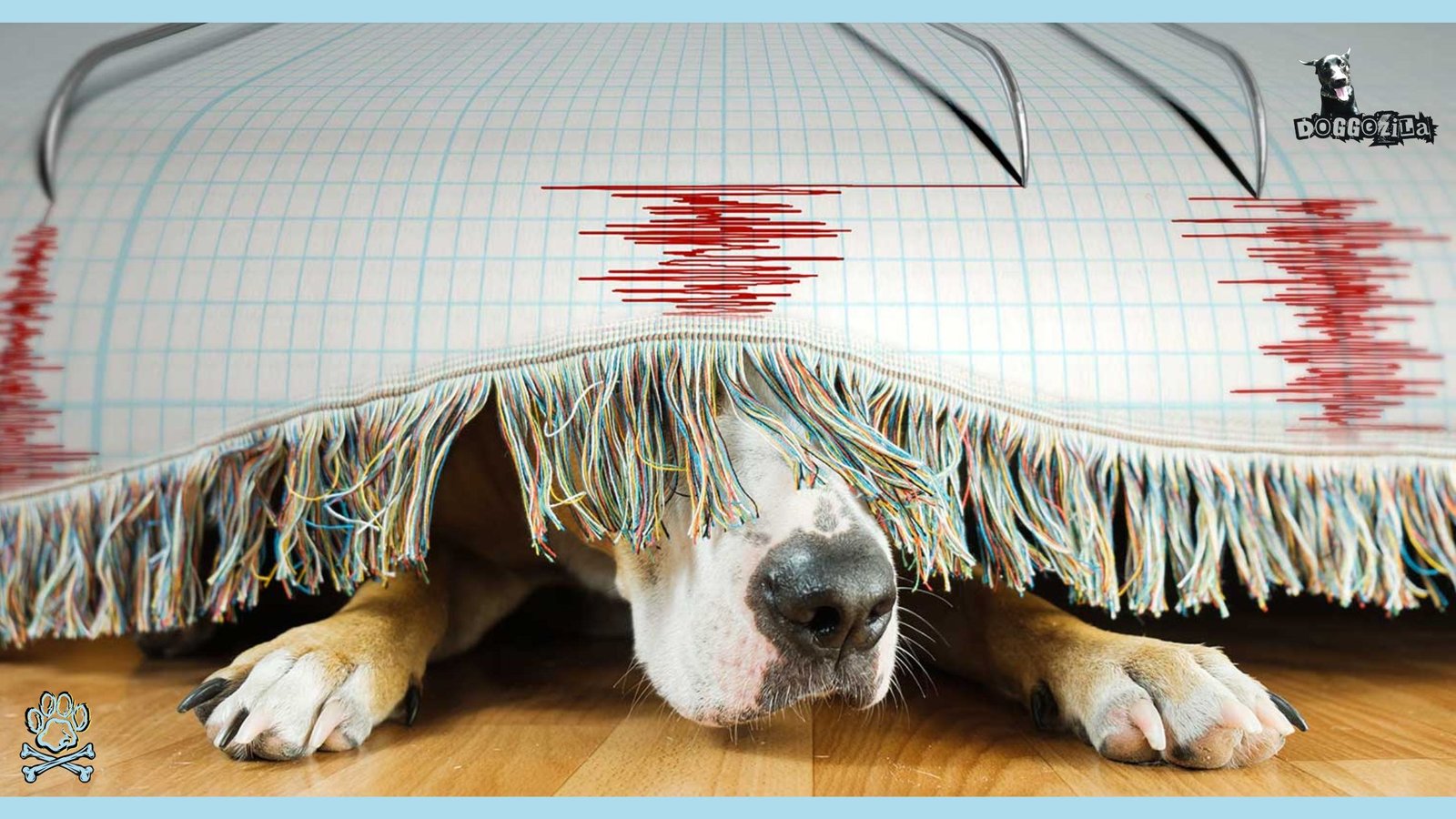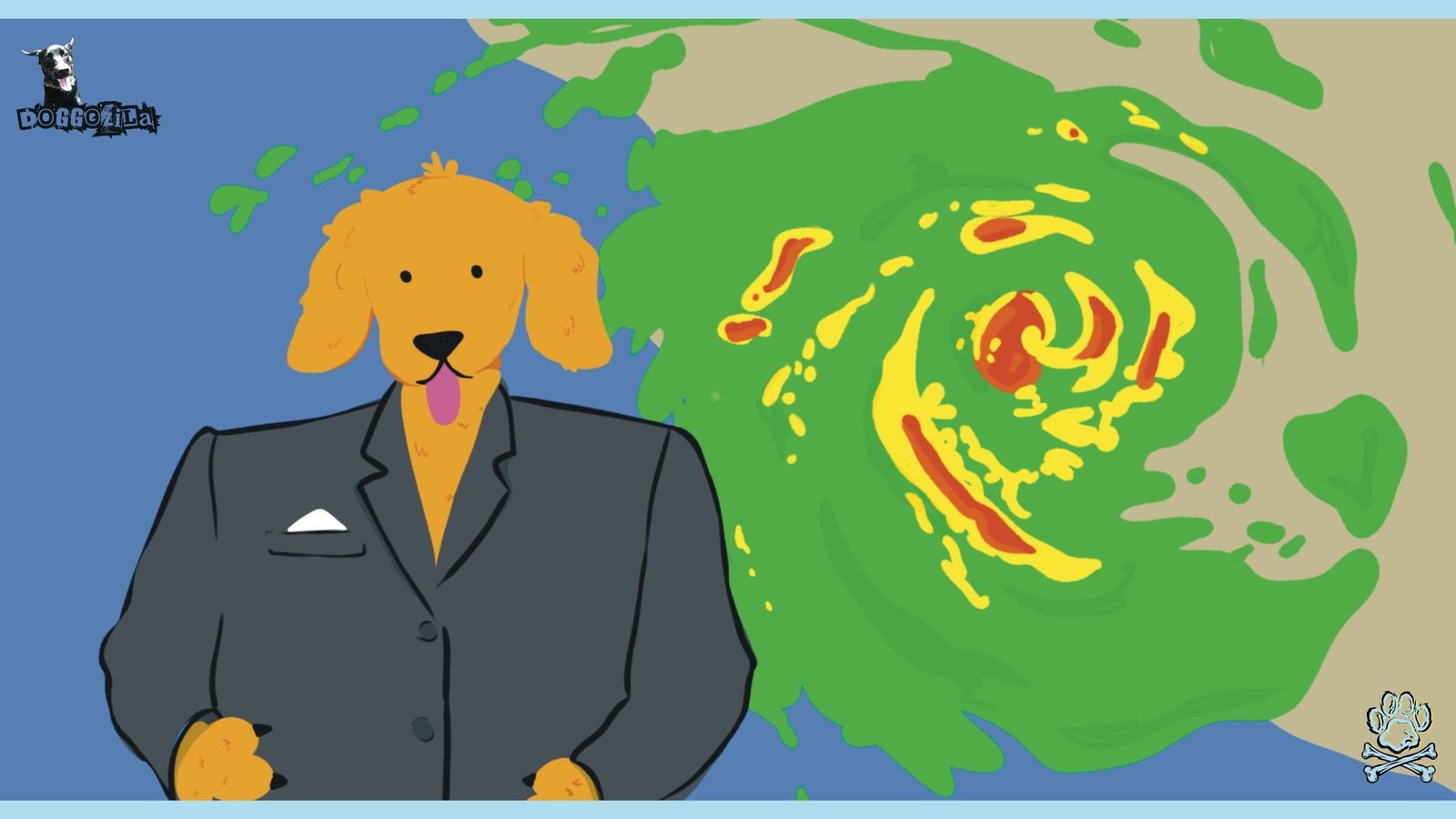
UNLEASHING NATURE’S MYSTERIES: UNVEILING THE TRUTH BEHIND ANIMAL INTUITION
Have you ever wondered if dogs can predict incoming earthquakes? Many people believe that animals have a special ability to predict seismic events. This idea has been around for a long time. In this blog, we will explore the truth behind this fascinating topic.
World of animal instincts and seismic activity
We will take a closer look at the connection between animal behavior and earthquakes. We will discuss scientific studies, historical stories, and interesting theories. You will learn about real-life examples of strange animal actions before quakes. Experts will share their insights on this puzzling phenomenon.
Get ready to dive into the world of animal instincts and seismic activity. We will try to uncover the secrets of our furry friends. You might be surprised to learn if dogs can really sense and predict incoming earthquake.
Understanding Dogs Behavior and Earthquakes
For many years, people have noticed unusual dogs actions before earthquakes. Dogs might bark more than usual. Birds might suddenly fly away. These behaviors have made people curious. Do animals have a sixth sense for detecting quakes? There are many stories of pets acting strange before a big earthquake.
For example, some dogs refused to go inside before a major tremor. Other animals seemed restless or scared for no clear reason. Scientists have different ideas about why this happens. Some think animals can sense small early signs of an earthquake. Others believe it’s just a coincidence.
More research is needed to find the truth. Sometimes animals act in weird ways. This could mean something big is happening. Like an earthquake. But what things do animals do? They may change daily habits. Or look really upset. A calm dog may pace and whine for no reason. Cats could hide or run away. Birds might leave nests and fly strangely.
Changes In Dogs Behavior Before Earthquakes
These odd behaviors often occur before a big earthquake hits. It makes people think animals can sense quakes coming. This idea makes sense. Animals have sharp senses. They notice changes in their surroundings. One idea is animals hear vibrations before the quake. These are called primary waves or P-waves.
They travel faster than secondary waves that cause damage. So, animals feel them first, before people notice anything. Another idea is animals sense changes in the Earth’s magnetic field. Or electrical charges in the air that happen before quakes.
Some scientists think certain animals like snakes and fish sense gases or chemicals released from the ground before the shaking. These reasons could explain why animals act strangely. But we must be careful. Not all weird animal acts mean an earthquake is coming. We still have lots to learn about how animals’ sense upcoming quakes.
🔑 Key Points: Dog and other animals have been known to exhibit unusual behaviors before earthquakes. However, scientists are still studying the reasons behind this. The exact mechanisms are not fully understood yet.
Historical Accounts of Dogs and Other Animals Predicting Earthquakes
Over the years, there have been many stories of dogs and other animals acting strangely before big earthquakes. These stories passed down through generations made people believe that all animals, dogs included can predict earthquakes before they happen.
- One famous story is from 373 BC in ancient Greece. It is said that rats, weasels, snakes, and centipedes left the city of Helice days before a powerful earthquake and tsunami hit.
- Similarly, in 1975 in Haicheng, China, officials evacuated thousands of people before a 7.3 magnitude quake. They acted partly on reports of unusual animal behavior. Dogs are often mentioned in such stories.
- Before the 1906 San Francisco earthquake, horses were seen running away from the city. Dogs were howling and barking nonstop. There are similar stories of dogs acting oddly before quakes in Japan, Italy, the US, and elsewhere.
- For example, in 2009 in L’Aquila, Italy, a woman claimed her dog Romeo was restless for hours before a 6.3 quake hit. The usually active Romeo refused walks and stayed close to his owner, which was unlike his normal behavior.
Separate the stories from the facts
Historical stories about dogs that predict earthquakes fascinate people. However, we must approach them cautiously. Personal accounts can be biased by things like culture, experiences, and hindsight. We need to separate coincidences from real cases of animal earthquake prediction.
Not all animals act strangely before quakes. Strange behavior doesn’t always mean an earthquake will happen. The inconsistency makes it hard to find reliable patterns in historical evidence alone.
🔑 Key Points: People share stories of animals like dogs seemingly predicting earthquakes. But these anecdotes may be subjective due to bias. We should view them carefully.

THE SCIENCE BEHIND DOGS THAT PREDICT EARTHQUAKES
Recent studies try to understand how animals sense quakes.
While research continues, some theories explain this intriguing ability.
Sensitivity to Primary Waves (P-waves)
One theory says animals detect primary waves (P-waves) before quakes. P-waves are the fastest seismic waves, traveling up to 8 km/second through Earth’s crust. Humans can’t feel these subtle waves, but animals with enhanced senses might. P-waves release a low-frequency sound and vibrations before the main quake.
Some animals like elephants and whales communicate using low frequencies. This may help them perceive the first tremors of an impending quake. Researchers suggest animals’ ability to hear and feel low-frequency vibrations allows early detection. Their heightened senses act as an early warning system before humans notice anything.
Sensitivity to Ionizing Radiation
Another theory proposes animals can sense ionizing radiation released before quakes. When tectonic plates shift, it creates an electric charge that emits radiation. Some animals like birds and rodents are sensitive to radiation changes.
Studies show insects, fish, and amphibians also change behavior after radiation exposure. Their sensitivity may warn them of impending quakes. However, this theory has limitations. Radiation release isn’t always consistent with earthquake patterns and magnitudes.
Sensing Changes in Electromagnetic Fields
Earthquakes also disrupt Earth’s electromagnetic field. Some scientists believe animals detect these field changes due to their unique sensory abilities. Specific species like sharks and rays have electrical sense organs. These allow them to perceive extremely weak electric fields for hunting and navigation. Similarly, birds may use electromagnetic cues during migration. Dogs possess an exceptional ability to predict impending earthquakes.
A study by Japanese doctor Kiyoshi Shimamura revealed a significant increase in dog barks and anxious behavior 1-2 hours before the 1995 Kobe earthquake. He proposed that dogs responded to P-waves arriving around that time. Similar findings from other studies suggest dogs sensitivity to low-frequency vibrations could serve as an early warning for earthquakes.
Changes in Electromagnetic Fields and Air Ionization
Another theory suggests animals may detect changes in the Earth’s electromagnetic field or air ionization before seismic events. Studies show stressed rocks emit electromagnetic signals. Some animals like sharks and birds navigate using these fields.
In a research study, Dr. Stanley Coren from the University of British Columbia found dogs exhibited increased anxiety and stress behaviors like pacing and trembling before earthquakes. He suggested dogs might detect changes in electromagnetic fields or air ionization, triggering unusual behaviors.
Before earthquakes, the Earth’s movements generate low-frequency acoustic waves or infrasound with frequencies below 20 Hz. These waves lie outside human hearing range but many animals can detect them. Some scientists believe dogs ability to hear infrasound could explain their unusual behaviors preceding earthquakes.
Acoustic Waves and Infrasound
Dogs may possess a heightened sensitivity to acoustic waves and infrasound generated by the Earth’s movements before earthquakes. These low-frequency waves have frequencies below 20 Hz, making them inaudible to humans but detectable by many animal species. This unique ability could enable dogs to predict impending seismic activity, potentially serving as an early warning system for earthquakes.
A study done in China found that catfish jumped out of their tanks up to 24 hours before an earthquake. The researchers thought the fish reacted to low sound waves made by moving tectonic plates. Other water animals like eels and sharks showed similar behaviors. This supports the theory that sound waves may help dogs detect earthquakes.
Olfactory Cues and Chemical Changes
Another idea is that animals can smell or taste chemical changes in the air or water before an earthquake. Earthquakes can release gases like radon, carbon dioxide, and methane from the Earth’s crust. These gases might act as smells that animals with sharp senses can pick up.
A study in the Journal of Environmental Science and Technology found that pets like dogs behaved oddly before the 2016 Norcia earthquake in Italy. The pets had higher stress hormone levels in their hair samples weeks before the quake. The researchers think the animals reacted to increased carbon dioxide or other gases released from the Earth’s crust.
🔑 Key Points: Studies explore how dogs may predict earthquakes through sound waves, changes in electromagnetic fields, acoustic waves, and chemical cues in the environment. Animals seem to detect subtle changes that humans cannot.

HINDSIGHT BIAS IN ATTRIBUTING BEHAVIORS SOLELY TO EARTHQUAKES
The idea of animals predicting earthquakes is captivating. But we must approach it with a critical eye. We need to be aware of hindsight bias. Hindsight bias is when we think events are more predictable after they occur. We may overestimate the significance of behaviors or signs in retrospect.
Research, Prospective Studies And More Reports Are Needed
When it comes to animal behavior and earthquakes, hindsight bias can lead us to over interpret unusual animal actions. We may think they predict seismic activity when there are other explanations. For example, a dog’s restlessness or anxiety could be due to an impending earthquake. But it could also be caused by illness, changes in routine, or external stimuli like fireworks or thunderstorms.
To minimize hindsight bias, we must approach reports and studies critically. There may be evidence linking dogs behavior and earthquakes. But we must consider alternative explanations. We need more research to establish a causal relationship.
One way to address hindsight bias is through well-designed, prospective studies. These studies monitor animal behavior over time, with and without seismic activity. By comparing unusual behaviors in these contexts, researchers can better determine if there is a genuine connection between dogs actions and earthquakes. Or if the association is merely coincidental.
🔑 Key Points: Hindsight bias can sometimes lead to overestimating animals’ abilities to predict quakes. But careful studies are needed to prove if they truly sense impending seismic events.
Monitoring The Behavior of Dogs That Predict Earthquakes
Some researchers explore monitoring the behavior of dogs as a way to predict earthquakes. They think animals may sense impending quakes. So, observing their activities could reveal early warning signs. In Italy, researchers studied farm animals like cows, sheep, and dogs. They set up cameras and sensors in barns to track behavior 24/7.
The goal? To spot any unusual actions that might indicate an upcoming quake.
The study found farm animals got more restless and vocal hours before seismic events. Cows were especially active – standing up, lying down repeatedly, seeming agitated. These changes were strongest in animals closest to the quake’s epicenter. This suggests their response could be linked to proximity.
China And Japan Using Birds And Fish To Monitor Earthquakes
In China, scientists use special tools to listen to chickens’ sounds. They record the noises chickens make in earthquake prone areas. Researchers found that before quakes occur, chickens make different sounds. Their calls get louder and last longer.
Similarly, in Japan, experts study catfish behavior in aquariums. They noticed catfish swim erratically and become more active hours before an earthquake hits. Some aquariums even have live cameras to broadcast catfish movements. This allows people to watch for any unusual acts that may signal an upcoming quake.
While monitoring animals shows promise, challenges remain. Scientists must observe animals over long periods to understand normal behaviors. Then, they can identify true abnormalities. Not every animal may react the same way. How strong or close the earthquake is could affect when and how animals respond.
🔑 Key Points: Closely watching farm animals and fish for strange activities has potential for earthquake prediction. However, more research is needed to develop reliable forecasting methods based on animal behavior.

THEORIES ON HOW DOGS MAY PREDICT EARTHQUAKES
Dogs have a special ability to sense when an earthquake is about to occur. They can detect signs we humans cannot. Scientists have studied dogs and proposed several ideas to explain this skill. One theory is that dogs can hear high-pitched sounds and feel low vibrations in the ground. These happen before the main earthquake shaking.
Dogs May Predict Earthquakes with Their Hearing
A Japanese doctor, Kiyoshi Shimamura, studies how the behavior of dogs relates to earthquakes. He says dogs may hear the primary waves (P-waves) that come before the stronger secondary waves (S-waves). Shimamura found that dogs bark and act anxious 1-2 hours before an earthquake hits.
This is when the P-waves arrive. Dogs’ excellent hearing allows them to sense these early seismic sounds and vibrations. This could explain why dogs get restless, pace around, or seek comfort from owners in the hours before a quake.
Changes in Electrical Fields and Air Ionization
Another idea is that dogs can sense changes in the Earth’s electrical fields or changes in the air’s ionization before an earthquake strikes. This theory comes from Dr. Stanley Coren, a psychology professor at the University of British Columbia.
Coren’s research shows that in the hours leading up to an earthquake, dogs display more stress behaviors like trembling and hiding. These behaviors could be a response to changes in electrical fields or air ionization that happen before seismic activity.
Dogs May Predict Earthquakes with Their Sense of Smell
So, dogs may be able to detect early signs of earthquakes through their exceptional hearing abilities or by sensing changes in electrical and air conditions. Their close bond with humans means we can observe their unusual pre quake behaviors. Understanding how dogs sense quakes could help develop better earthquake warning systems.
Do dogs have a special ability to predict earthquakes before they happen? Some scientists believe that’s the case.
Coren, an expert, suggests that dogs’ sharp sense of smell may allow them to detect gases like radon or changes in air ionization. These chemical and electrical shifts can happen due to stress buildup in the Earth’s crust. Detecting these changes could explain why dogs display unusual behaviors, possibly warning of an upcoming earthquake.
Sensitivity to Infrasound and Acoustic Waves
Another theory is that dogs can hear low-frequency acoustic waves called infrasound. These waves, with frequencies below 20 Hz, are inaudible to humans but detectable by many animals, including dogs. They are generated by the Earth’s movements prior to quakes.
Dogs May Predict Earthquakes with Their Sight
A U.S. Geological Survey study found increased dog activity and barking hours before the 1989 California earthquake. The researchers proposed the dogs were responding to infrasonic waves from shifting tectonic plates.
In 1989, before the Loma Prieta earthquake hit California, dogs showed unusual restlessness and barking. Scientists think the dogs sensed infrasonic waves caused by moving tectonic plates. These low-frequency sound waves are inaudible to humans but detectable by canines.
Olfactory Cues and Chemical Changes
Dogs’ incredible sense of smell may also help them detect quakes. Seismic activity releases gases like methane, carbon dioxide, and radon from the Earth’s crust. These gases could serve as olfactory cues for dogs.
A study found that before the 2016 Norcia earthquake in Italy, dogs exhibited strange behaviors and higher stress hormone levels in their hair samples. The researchers proposed the dogs were reacting to increased carbon dioxide or other gas releases from the crust, signaling chemical changes in the environment.
Before the 2016 Norcia quake in Italy, scientists noticed odd dog behaviors and elevated stress hormones in their hair. The researchers think the dogs smelled gases like carbon dioxide released by the shifting Earth’s crust. Their powerful noses detected these chemical changes signaling an imminent earthquake.
🔑 Key Points: Several theories have been suggested to explain how dogs may predict impending earthquakes. These include sensitivity to seismic sounds, changes in electrical fields, infrasound, and olfactory cues. However, more research is needed to confirm these hypotheses.

DR. STANLEY COREN’S STUDY ON DOGS BEHAVIOR AND EARTHQUAKES
Dr. Stanley Coren, a renowned psychologist and expert on dog behavior, conducted a significant study. He aimed to find scientific evidence for reports of dogs acting unusually before earthquakes.
Pet Insurance Data Measurement
In his study, Coren analyzed data from a pet insurance company in Vancouver, Canada. He looked at over 200 dog-related claims filed in the months before a 6.8 magnitude earthquake struck the region in 2001. Coren compared the frequency and nature of these claims to those filed during non-earthquake periods. He wanted to identify any significant differences.
Coren found that in the months preceding the earthquake, there was a notable increase in claims related to dogs’ anxiety levels and stress-related behaviors. These claims included reports of dogs becoming restless, pacing, trembling, and showing signs of fear or aggression. Some owners even reported that their dogs had run away from home or had become uncharacteristically clingy and seeking comfort.
Ground Survey Confirmed Pets Behavior
To further investigate these findings, Coren conducted a survey of dog owners in the affected area. He asked them about their pets’ behavior in the days and hours leading up to the earthquake. The survey results supported the insurance claim data. A significant number of owners reported that their dogs had displayed unusual and anxious behaviors. These behaviors included whining, barking excessively, or hiding.
Changes In Physiological Measurements
Dr. Coren measured the dogs’ physiological changes. He checked their heart rates and cortisol levels. Dr. Coren wanted to see if there was a difference before the earthquake. He found that the dogs had higher pulse rates and stress levels in the hours before the earthquake. Their measurements were higher than the baseline.
Based on these findings, Dr. Coren concluded that dogs might predict earthquakes coming. They may be sensitive to changes in the Earth’s magnetic field, low vibrations, or other cues. He said more research could help identify how dogs sense quakes. This could lead to early warning systems using animal behavior.
🔑 Key Points: Dr. Stanley Coren’s study showed evidence linking dog behavior to earthquakes. Dogs showed increased anxiety and stress behaviors hours and days before a quake.
Crowdsourcing and Social Media in Earthquake Prediction
In recent years, social media and crowdsourcing have opened new ways to use animal behavior data for earthquake prediction. Public participation and real-time reporting can provide a lot of information.
A Quick Summary on How Dogs Can Predict Earthquakes
We have gone through many different ideas and studies to understand the link between dogs intuition and earthquakes. From old stories to new scientific research, we closely looked at the possibility of dogs predicting earthquakes. Our exploration found interesting theories on how dogs may predict earthquakes coming, including high-pitched noises and changes in the air.
This intriguing topic showed the need to keep observing animal behavior and how technology could help predict quakes. While we may not have definite proof yet, our quest highlights the importance of thorough research and evidence related to natural disasters. We must stay curious and thoughtful when studying animals and earthquake activity.
Let’s keep an open mind about nature’s mysteries. By working together to learn more, we may make progress in understanding the relationship between animals and the Earth’s movements.

Thank you for joining us on this enlightening journey.









